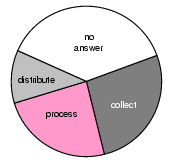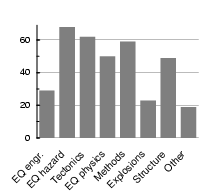More Waveform Links

The ISC web site has been improved to help users of the on-line Bulletin retrieve waveforms from more data centres.
Some waveform data centres assemble sets of waveform segments for events of special interest, and for several years the On-line Bulletin has included hypertext links to such data sets. In addition, the ISC now provides a straightforward 3-step system to send e-mail requesting segments from continuous archives.
First the user selects an event and the system provides a summary of data available at the time of the event. Second, the user specifies parameters that control the channels and time intervals to be requested, and an e-mail address to which the waveforms should be sent. The system then lists the channels that satisfy the criteria. Third, the user removes unwanted channels and submits the list. The system then composes and despatches request messages to all of the data centres from which the user requires data, and posts a confirmation page to the user.
The system offers each user the choice of recording their channel and time interval criteria as a "cookie" in their web browser. A user who accepts the cookie can then compose requests for data for other events without re-entering the same criteria.
To be really useful, the service requires waveform inventories that are complete and accurate. The IRIS DMC and CMR provide services that enable the ISC to meet this challenge by retrieving channel lists in real time. For other centres, the ISC uses channel lists with station open and close dates and rules specific to some of the data centres regarding data availability.
The system supports both AutoDRM and BreqFast request protocols, and users receive e-mails with data in the default format for each data centre. The system already helps users retrieve data from several data centres in each of North America and Europe, and other data centres offering automated responses to e-mail requests for waveform data can be added quickly.
To try the system, users can select events from the On-line Bulletin and click on the waveform icon, which appears below each event line.


